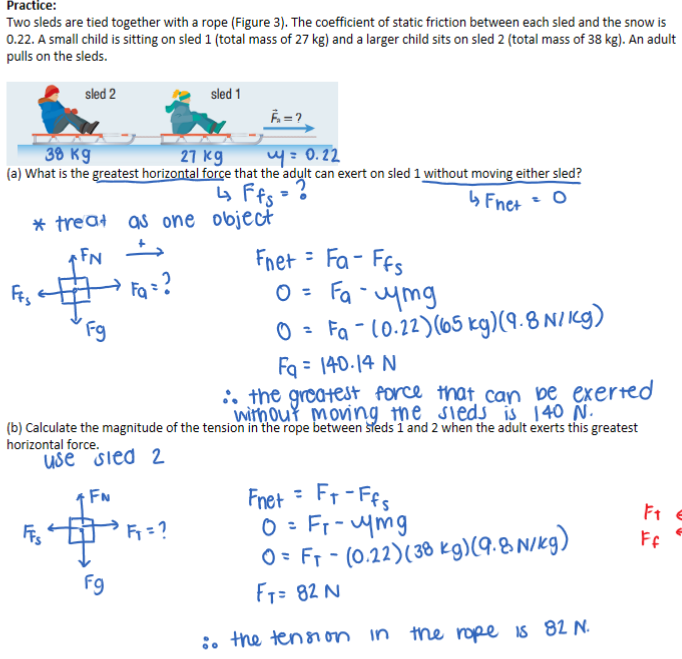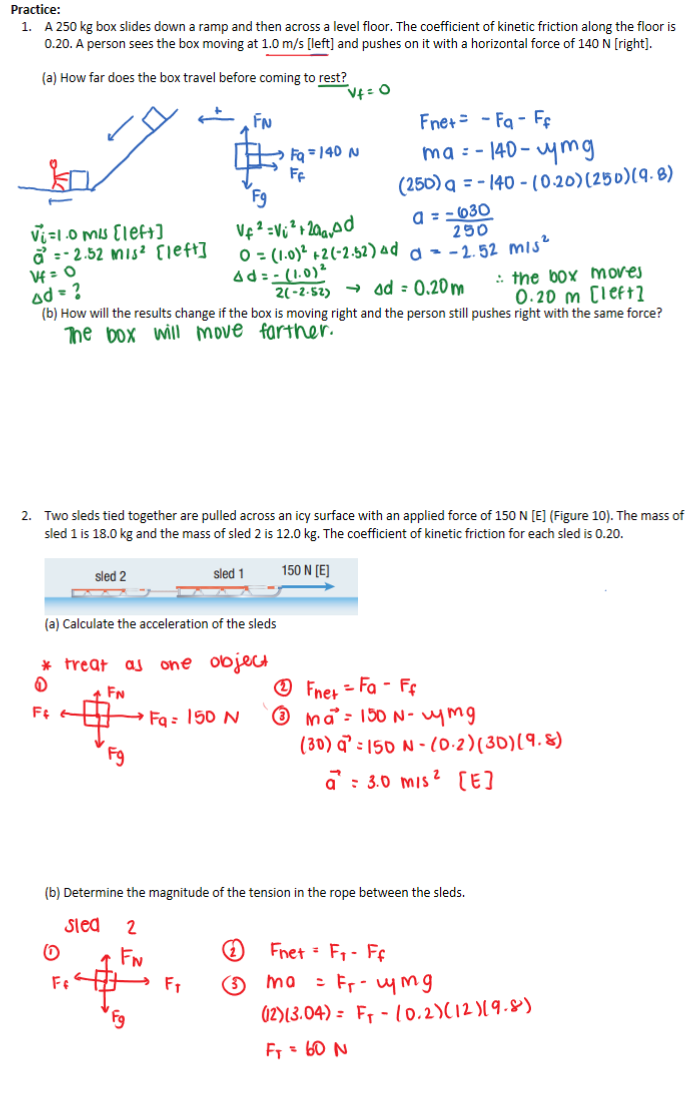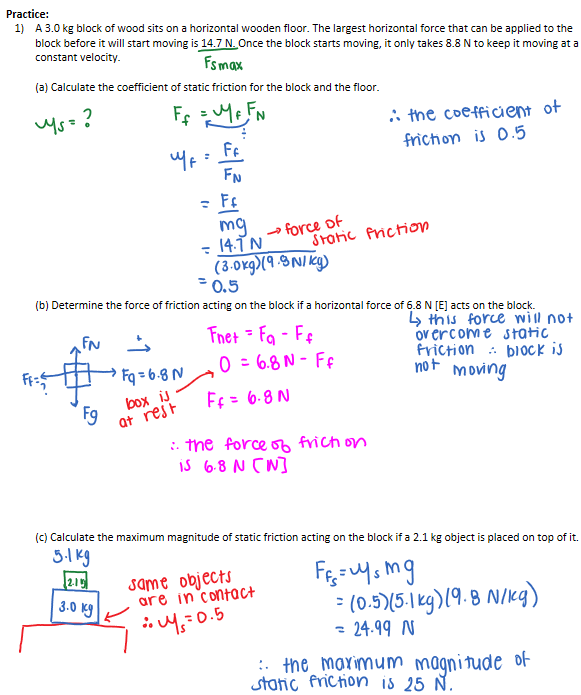Friction
A force that resists motion between two objects in contact. In most cases, so we can calculate
Static Friction ()
This type of friction prevents an object at rest from moving. The object remains are rest because the static friction is equal in magnitude and opposite in direction to the applied force
Once the applied force overcomes the Maximum amount of static friction (), then the object will start moving. If there are two or more objects, then you must overcome the combined maximum force of static friction to cause the objects to move.
Examples:

Kinetic Friction ()
This type of friction occurs when an object is sliding on another. It is a force exerted on a moving object by a surface and acts opposite to the direction. If the object moves at a constant velocity, then the applied force must be equal in magnitude to the kinetic friction
Examples:

Coefficient of Friction ()
Different surfaces in contact have different amounts of friction acting on them.
Coefficients of friction are determined experimentally for two objects in contact and is a level of how “slippery” the two object in contact are.

Usually the force required to start and object moving is greater than the resistance to keep an object moving. Therefore, is usually greater than
Example
